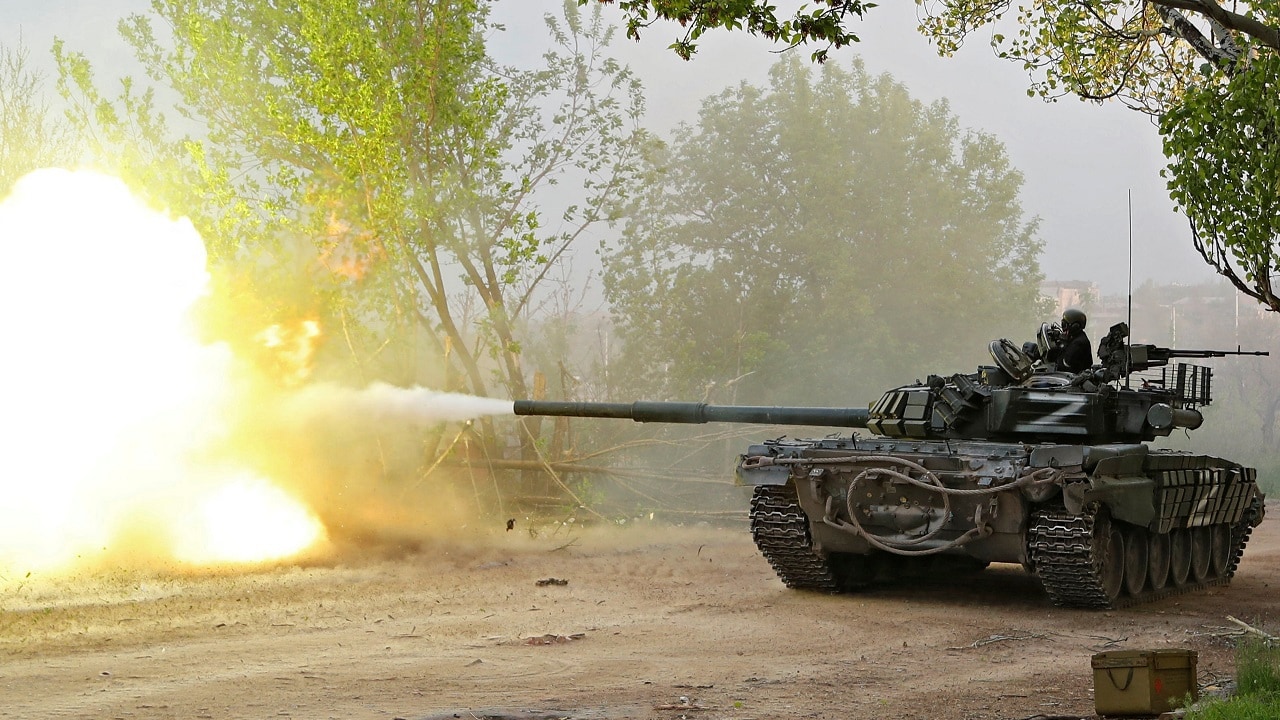Can Putin Take the Donbas? On day 93 of the Russian invasion of Ukraine, the Russian military is still trying to achieve a breakthrough in eastern Ukraine. However, Russian forces are slowly but steadily moving forward and making some gains. This is a result of a shift in the Russian strategy over the past few days.
Now, instead of going after major envelopments, the Russian forces are focusing on smaller, topical encirclements in the Donbas region.
Fighting in the Donbas
In its latest estimate of the war, the Institute for the Study of War assessed that the Russian military has been making advances in eastern Ukraine but also suffering some setbacks.
“Russian forces unsuccessfully attempted to advance southeast of Izyum near the Kharkiv-Donetsk Oblast border. Russian forces continued steady advances around Severodonetsk and likely seek to completely encircle the Severodonetsk-Lysychansk area in the coming days. Russian forces continued to make persistent advances south and west of Popasna toward Bakhmut, but the Russian pace of advance will likely slow as they approach the town itself,” the Institute for the Study of War assessed.
The Donbas is critical as the area contains most of Ukraine’s industrial base. The Russian military is expected to continue to apply pressure in the area and take advantage of Ukrainian combat fatigue, casualties, and logistical issues.
The Ukrainian military has performed admirably thus far. But three months of continuous war are bound to take a toll on the Ukrainian forces. Western weapons have revolutionized the warfighting capabilities of the Ukrainian military, but it is hard to replace combat-hardened and experienced troops, and particularly non-commissioned officers, who are the backbone of a military.
“Also in the northern Donbas to the—sort of the northeast part of the—of that Donbas area where they’re fighting, and that’s the line between Severodonetsk and Lysychansk. These are two towns we haven’t really talked about much, but we believe that Russian forces have been able to seize most of northeastern Severodonetsk, even though there’s still fighting going on there. And it looks as if they’re really trying to squeeze off Ukrainian forces that are in that area and down towards Lysychansk. So just something we’re watching,” a senior U.S. defense official said in a press briefing.
Meanwhile, the Russian military continues to consolidate its positions in southern Ukraine, where it has made the biggest gains. Supporting evidence that the Kremlin is seeking to annex the occupied territories of southern Ukraine to Russia, much like it did with Crimea in 2014, the Russian forces are creating additional defensive lines in the area to defend against potential future Ukrainian counterattacks.
“Russian forces in occupied areas of the Southern Axis are reportedly preparing a ‘third line of defense’ to consolidate long-term control over the region and in preparation to repel likely future Ukrainian counteroffensives,” the Institute for the Study of War stated.
Beyond Donbas: Russian Casualties and Forces in Ukraine
The Pentagon assesses that there are 110 operational battalion tactical groups, approximately 80 percent of the Russian combat capability, inside Ukraine, with the southern Russian grouping having the largest amount of these task forces; the western, central, and eastern groupings have a roughly equal number of battalion tactical groups. In some places, the Russian military has managed to achieve a 7 to 1 numerical superiority, according to the Ukrainian Ministry of Defense.
The Ukrainian Ministry of Defense claimed that as of Friday, Ukrainian forces have killed approximately 29,750 Russian troops (and wounded approximately thrice that number), destroyed 206 fighter, attack, and transport jets, 170 attack and transport helicopters, 1, 322 tanks, 623 artillery pieces, 3,246 armored personnel carriers, 201 Multiple Launch Rocket Systems (MLRS), 13 boats and cutters, 2,226 vehicles and fuel tanks, 93 anti-aircraft batteries, 503 tactical unmanned aerial systems, 48 special equipment platforms, such as bridging vehicles, and four mobile Iskander ballistic missile systems, and 115 cruise missiles shot down by the Ukrainian air defenses.
Although the Pentagon won’t verify the Ukrainian claims, a senior U.S. defense official said on Thursday that the U.S. military has evidence of high Russian casualties.
“We believe they’ve lost or rendered inoperable almost 1,000 of their tanks in this fight. They still have a lot left available to them. But we think they lost nearly about 1,000. They’ve lost well over 350 artillery pieces. They have lost almost three dozen fighter bomber fixed-wing aircraft and more than 50 helicopters. But, again, they still have a lot of capability left to them, as we have been talking about,” the senior U.S. defense official said.
1945’s New Defense and National Security Columnist, Stavros Atlamazoglou is a seasoned defense journalist specializing in special operations, a Hellenic Army veteran (national service with the 575th Marine Battalion and Army HQ), and a Johns Hopkins University graduate. His work has been featured in Business Insider, Sandboxx, and SOFREP.

